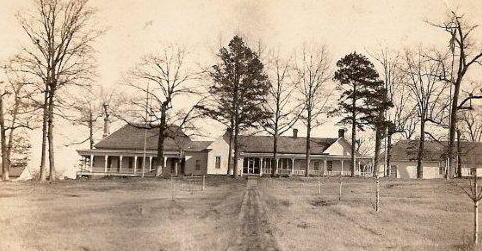
Paul J. Rainey Estate -Tippah Lodge

Paul J. Rainey Estate -Tippah Lodge
In 1901, after attending the National Bird Dog Field Trials near Grand Junction, TN, millionaire playboy Paul J. Rainey began to assemble an estate near Cotton Plant, in the southern part of Tippah County. His goal, it would seem, was to provide him and his peers with a superior hunting facility. Within a few years he had acquired 10,000 acres of land, all except a few hundred acres being in Tippah County. He enlarged and remodeled an existing home that became known as Tippah Lodge.
The lodge stood on one of his earlier purchases about a mile north of the community of Cotton Plant. After remodeling was completed, the lodge contained twelve bedrooms and included, among other features a game and billiard room decorated with trophies from his hunts, and a indoor heated swimming pool. The surrounding area contained among other things, a sunken garden, paved roads, a dog food kitchen, and a large round brick polo barn equipped to hold 50 horses. His passion was hunting with dogs, and he raised several breeds of hunting dogs on the grounds and was known to keep two live bears on the property that were used to train the dogs.
|
|
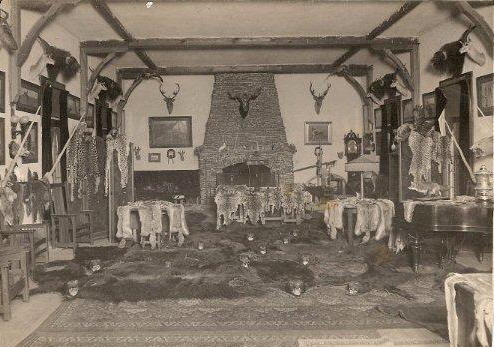 Trophy Room Said to have an elephant hide sofa. |
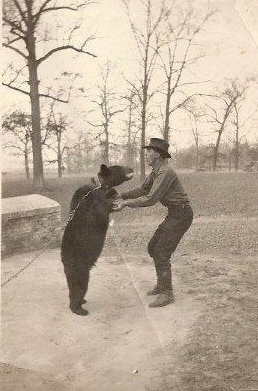 The famous black bear that was chained out front of the lodge. |
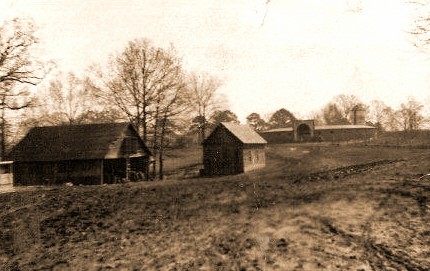 The round polo horse barn
in the distance.
|
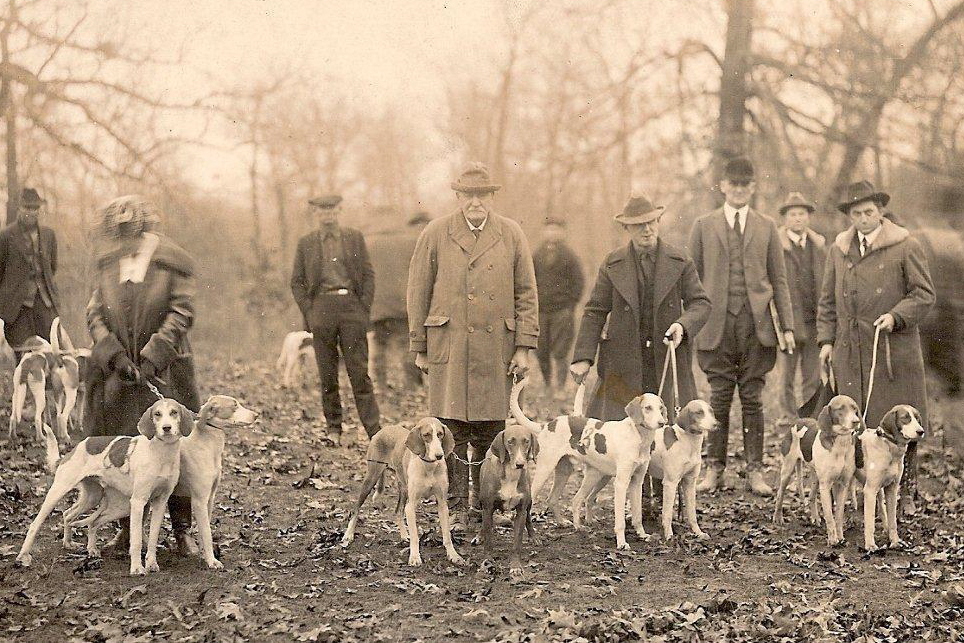 Fox Hunt Rainey Estate |
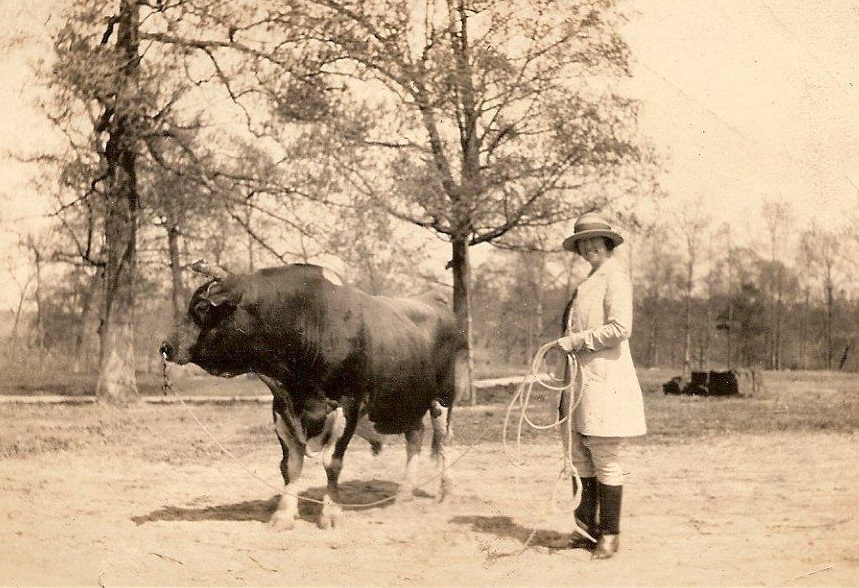 Mae Peters Graham |
These photos were provided by Peggy Gorby,
whose Grandfather, John Hotherstall worked for Mr. Rainey.
The Rainey Estate provided jobs in the area at a time when they were desperately needed. Rainey was known to hunt with the locals and socialized with the leaders of the larger nearby towns of New Albany and Memphis. When Rainey was in residence, it was the scene of some lavish entertaining, for which he liked to bring out from Memphis the famous band of W. C. Handy. The railroad built a siding across the main road from the lodge and it was not unusual for guests to arrive in Pullman Cars. The Rainey parties were rather exclusive events, except for the picnic he gave annually on the Fourth of July, to which everyone white and black, was invited. He had The Rainey Hotel built in nearby New Albany to catch the lodge overflow and to provide him and his guests a nice place to stay if they had to overnight there before traveling to the estate. The hotel was modeled after European hotels and included marble floors and a European chef. Upon completion, the hotel was known to be one of the best of it's kind in Mississippi.
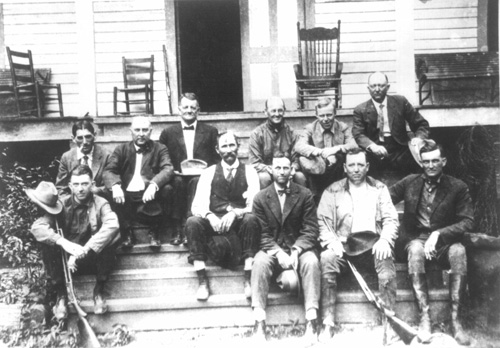 Hunters
on the Steps of Tippah Lodge
|
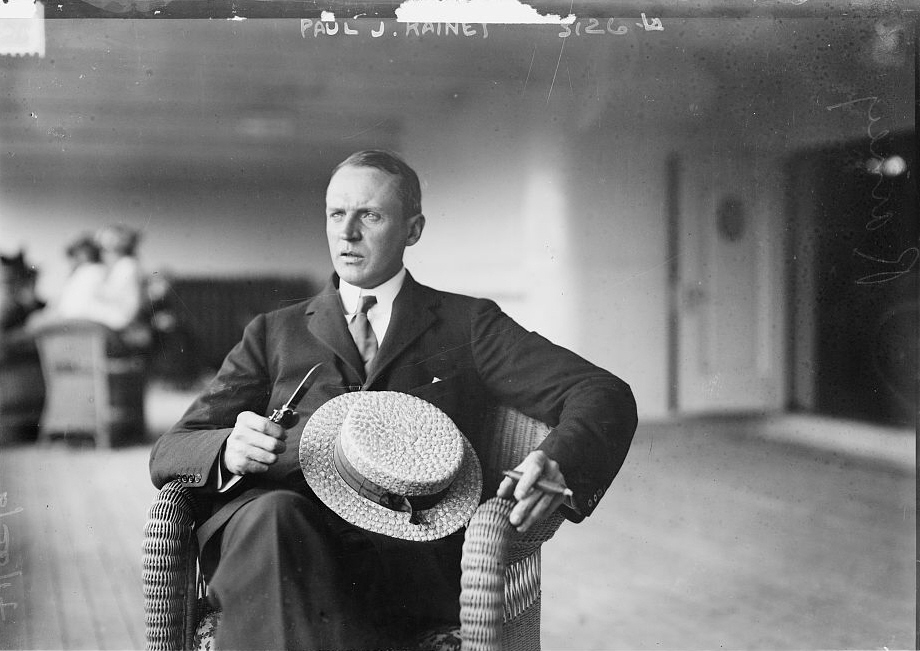 Paul J. Rainey
circa 1910 |
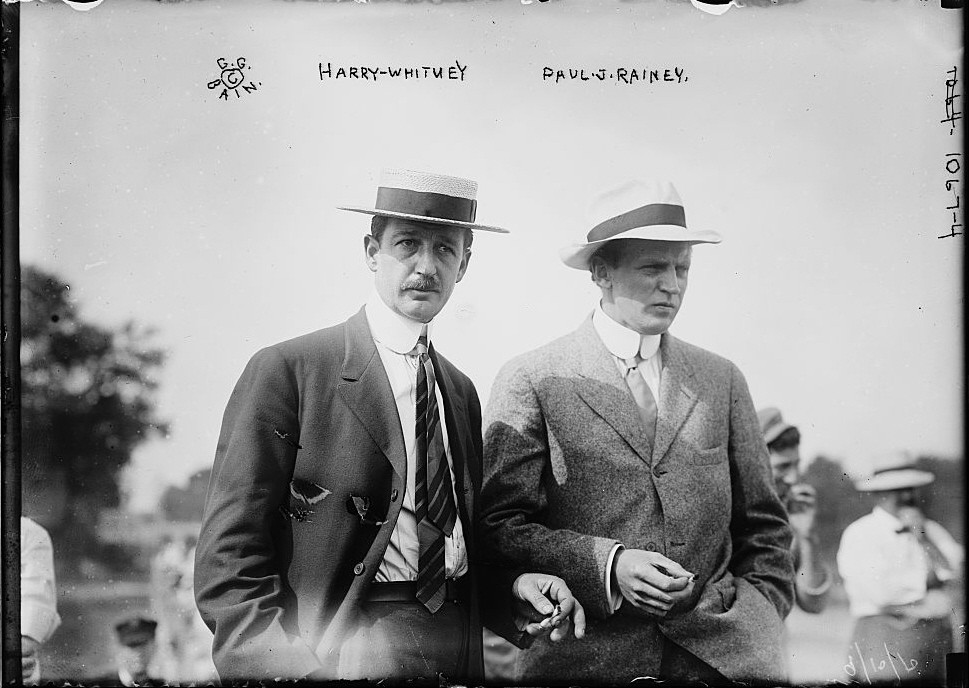 Harry
Whitney and Paul J. Rainey
September 10, 1910 |
Rainey traveled extensively, including Europe, Africa, Russia, China and the Arctic, and was an avid sportsman and photographer. During one expedition to the Arctic to explore, photograph and hunt, he and Harry Whitney (pictured above) captured two Polar Bears and several other animals which they brought back and donated to the Bronx Zoo. The two became well known Arctic Hunters and Explorers and were featured in numerous books and magazines recounting the expedition. When World War 1 began, Mr. Rainey tried to enlist, but was turned down due to some health problems. Refusing to be left out of the war, he bought and outfitted an ambulance and drove it in France during the conflict there. Later during the war he became a photographer for the Red Cross. After World War I ended, Rainey spent most of his time in Africa. He purchased a plantation near Nairobi, British East Africa, in a region which was said to contain more game than any other area on the continent. In 1923, he organized an expedition to hunt the area, and sat sail from Southampton to Cape Town. On the voyage, he died suddenly of a cerebral hemorrhage and was buried at sea on September 18, 1923. He was 46 years old.
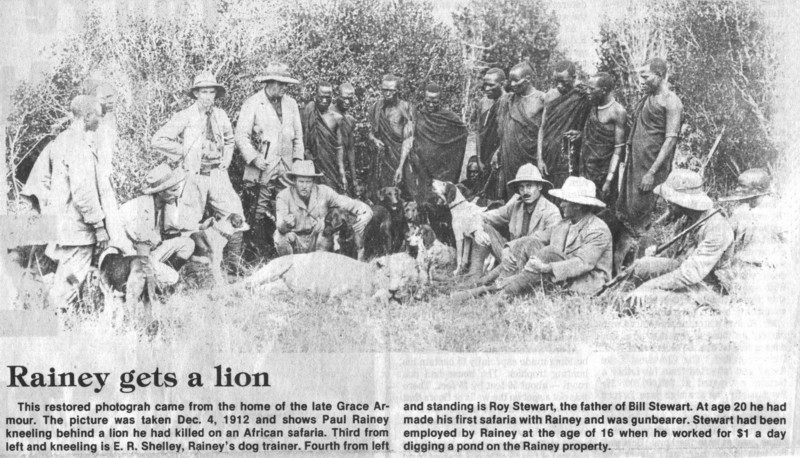
A hunting party near his farm in Africa
This picture and caption appeared
in the Southern Sentinel around the time of the Rainey Sale
and Auction.
Rainey left his estate in the care of his sister Grace Rainey Rogers, and the contents of his house in Cotton Plant were kept relatively as is until after her death in the late 1950's. Grace gave several hundred acres to Mrs. Mae Peters Graham, a good friend and romantic interest of the late Rainey. Most of the remaining land was sold into farming parcels during the 1940's, except for several hundred acres surrounding the lodge. Some of his game trophies were donated to the Pink Palace Museum in Memphis and became known as the "Rainey Collection." The estate was sold, and the contents auctioned off in a well attended sale on the grounds in the 1960's. Later, the rambling old house was torn down except for the game room and the round polo barn. Both were restored and a new plantation style house was built on the original lodge site. Entrance posts still remain along with a double line of cedar trees that surround the walkway that lead up to the front doors of the estate house.
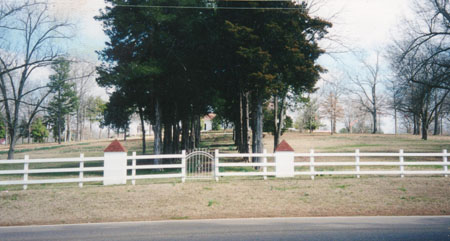
Tippah Lodge Today
Paul J. Rainey is still
remembered by what he accomplished in his short life. He was
first to produce films of wildlife hunts in Africa and they were
shown in movie theaters in New York City and other places. One
of his films was entitled "Paul J. Rainey's African Hunt." Most
of his film clips by are in the collection of the Library of
Congress and a video of those is in the collection of Ripley
Public Library in Tippah County. Rainey raised and trained
hounds at Tippah Lodge which were carried to Africa for the
hunting of lions. Hunting lions on horseback using hounds had
not been done before. He wrote an account of life in
Russia shortly after the Bolshevik Revolution, where he filmed
prisoners and the last residence of Czar Nicholas II. In
1934, the Paul J. Rainey Memorial Gate was erected at the Bronx
Zoo, given by his sister, Grace Rainey Rogers.
Click on the
picture above to view Paul Rainey's film of the "Last known
home of Czar Nicholas of Russia",
from the Library of Congress Collection of Early Motion
Pictures on Youtube
Following his death, his sister,
Grace Rainey Rogers, was persuaded to donate 26,000 acres of
marshland that he owned on the Gulf of Mexico in Perry,
Louisiana, to the Audubon Society. The Paul J. Rainey
Wildlife Sanctuary was a prize beginning for Audubon's system at
a time when waterfowl of all kinds were under intense hunting
pressure. The Audubon Society refers to Rainey as "a high
living young man whose escapades made him notable even in the
"Roaring Twenties."
Related Links and Photographs:
Paul Rainey - A legendary
Figure by Mary Ashmore Scobey
The
Rainey
Hotel in 1907
The Audubon Society
The Paul J. Rainey Memorial Gateway,
Bronx Zoo , New York
Silver King Polar Bear (time of capture)
Round Polo Barn- Tippah Lodge
Paul Rainey in his hunt clothes
Sources:
Tippah County History by Andrew Brown
The Audubon Society Web site
The Amazing Paul J. Rainey, by Danny Murray
The Commercial Appeal, Memphis, TN
Pictures provided by Tommy Covington and Peggy Gorby,
George Grantham Bain collection photos from the Library of
Congress
Personal knowledge and accounts from residents living in
the area.
To read the articles written by Paul J. Rainey, do a search in
Google books for Paul J. Rainey.

Contact me if you have
information or pictures regarding Paul J. Rainey.
Melissa McCoy-Bell
Tippah County MSGENWEB
Coordinator
© 2003-2012, by Melissa McCoy-Bell. All
rights reserved. No part of this may be used without
permission.